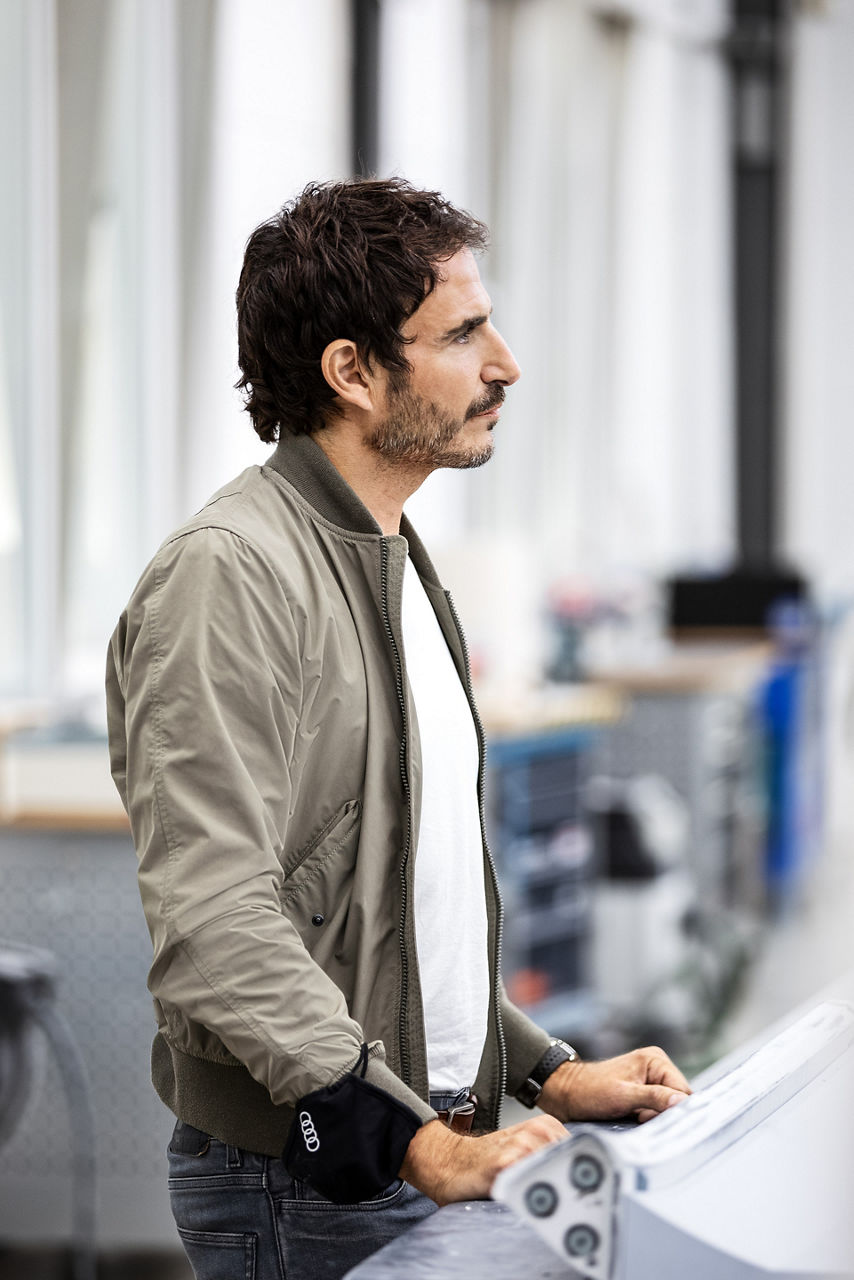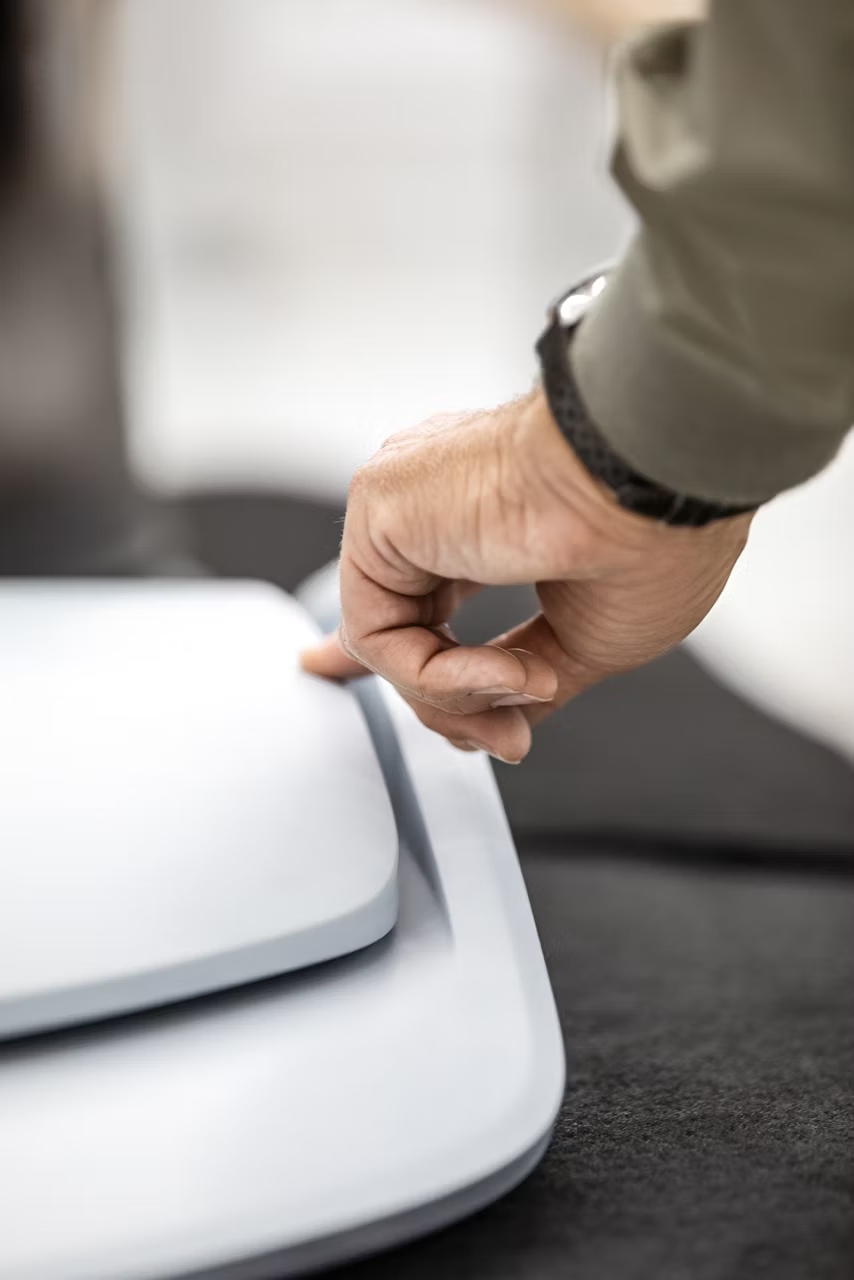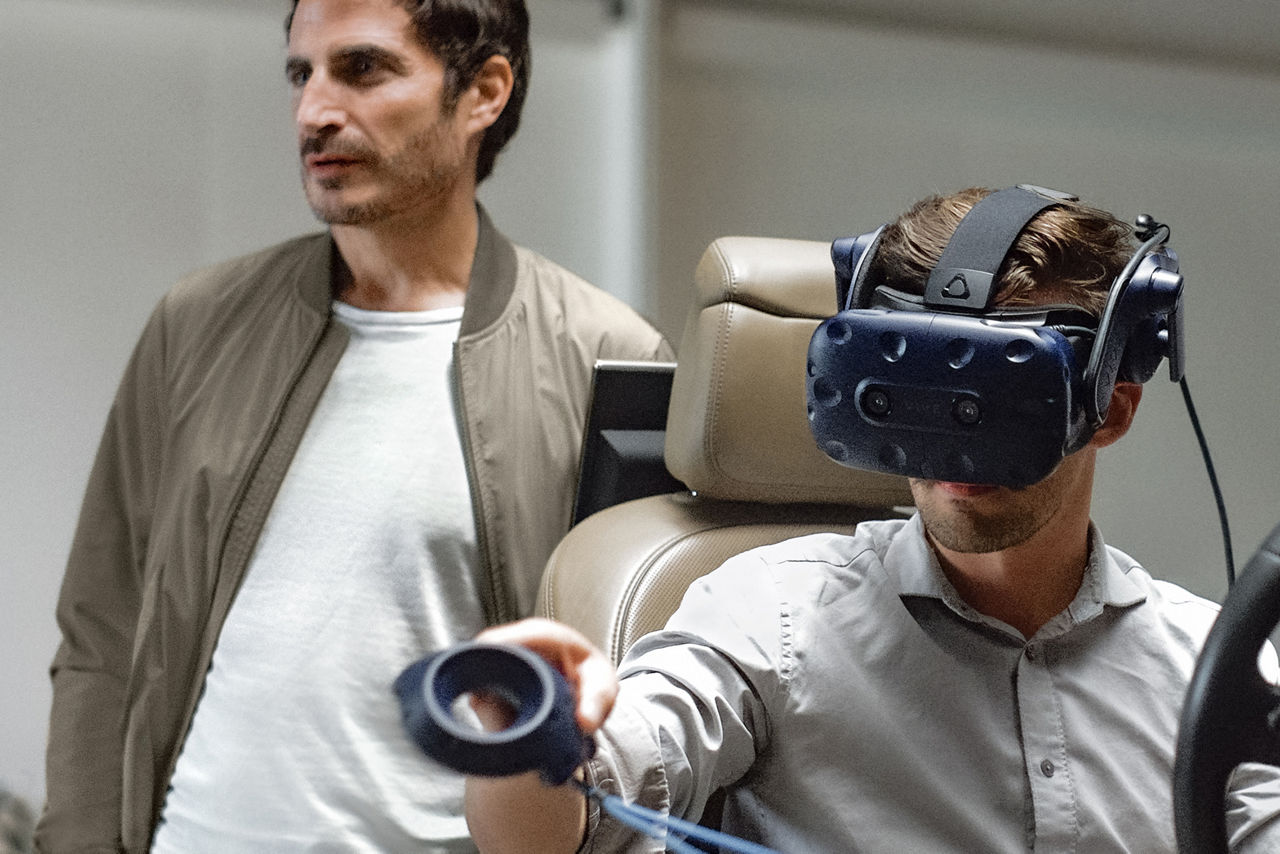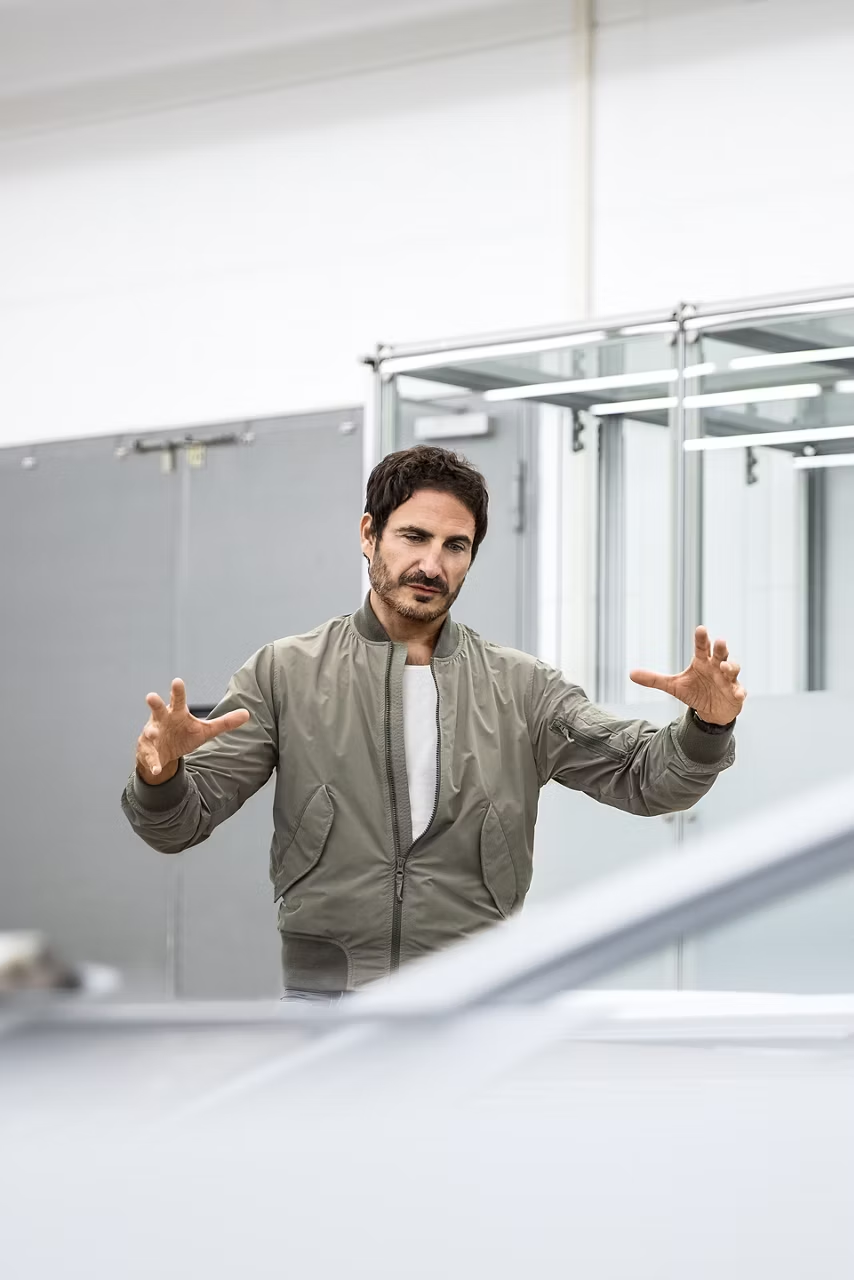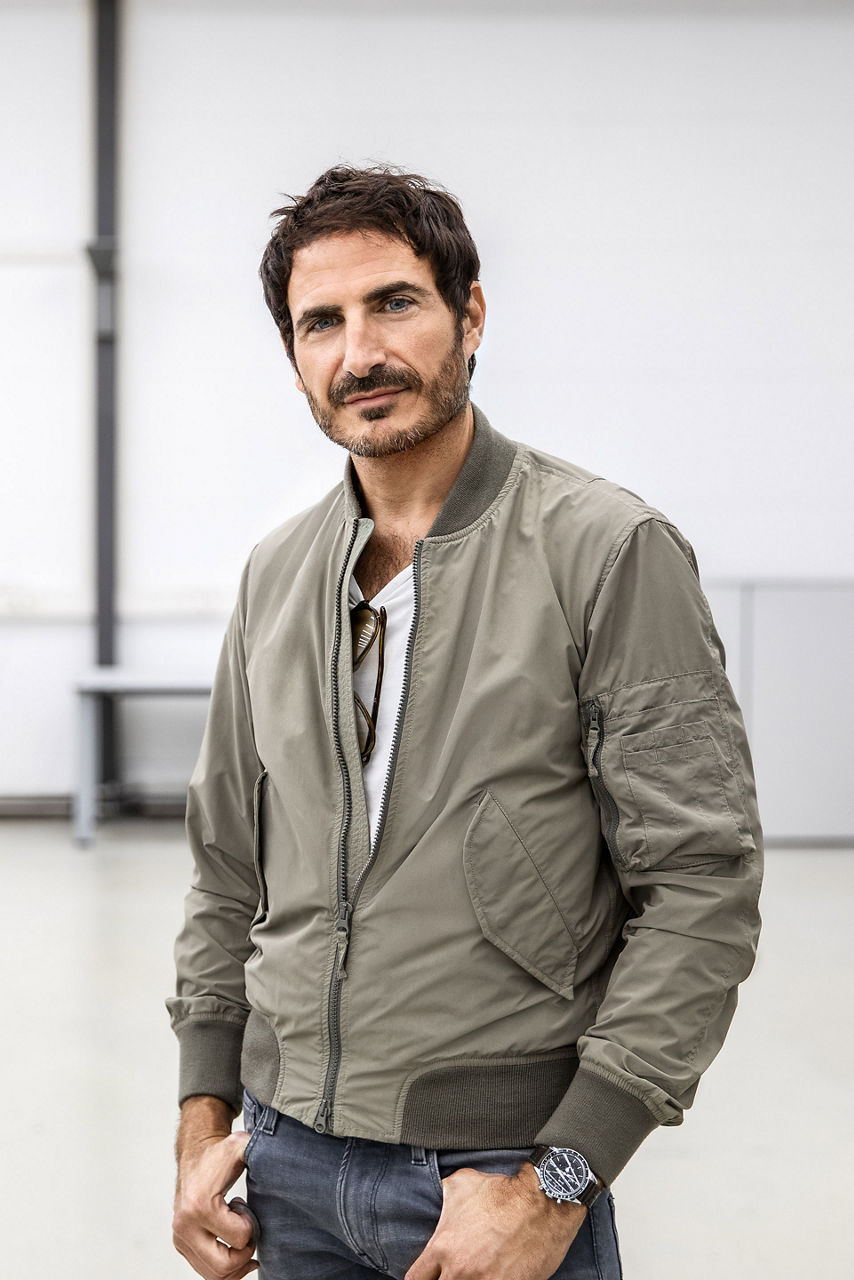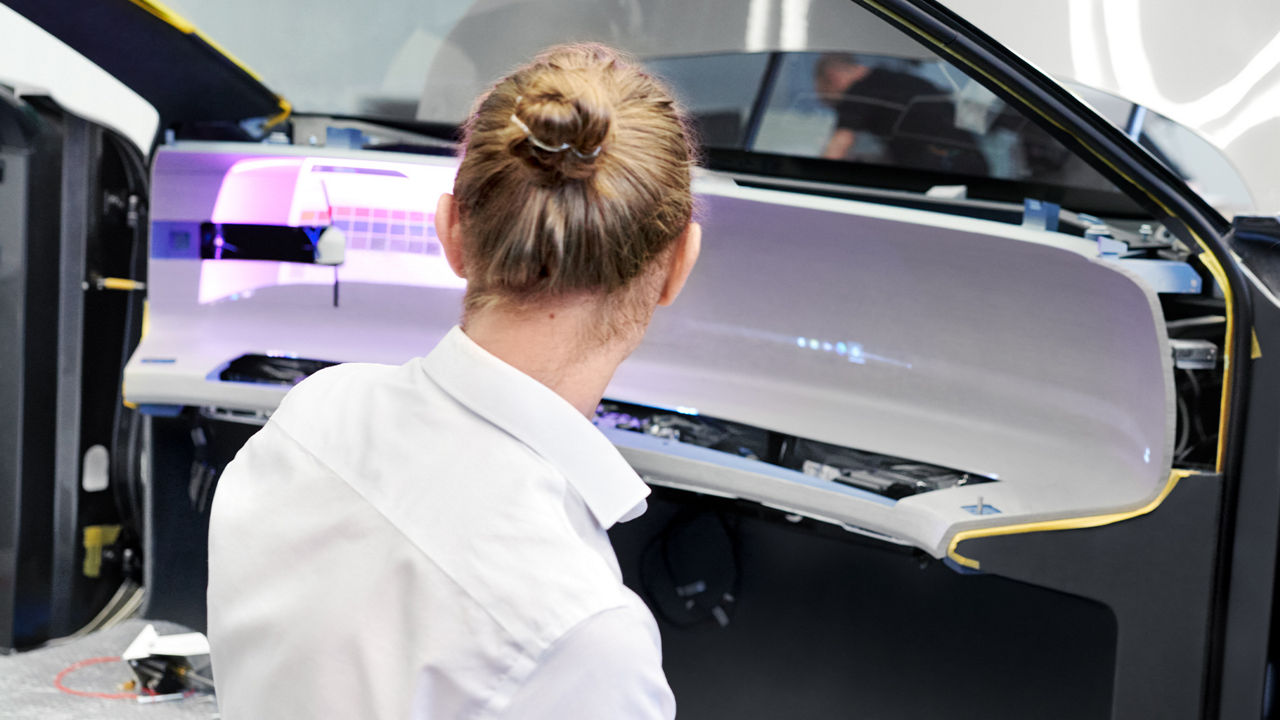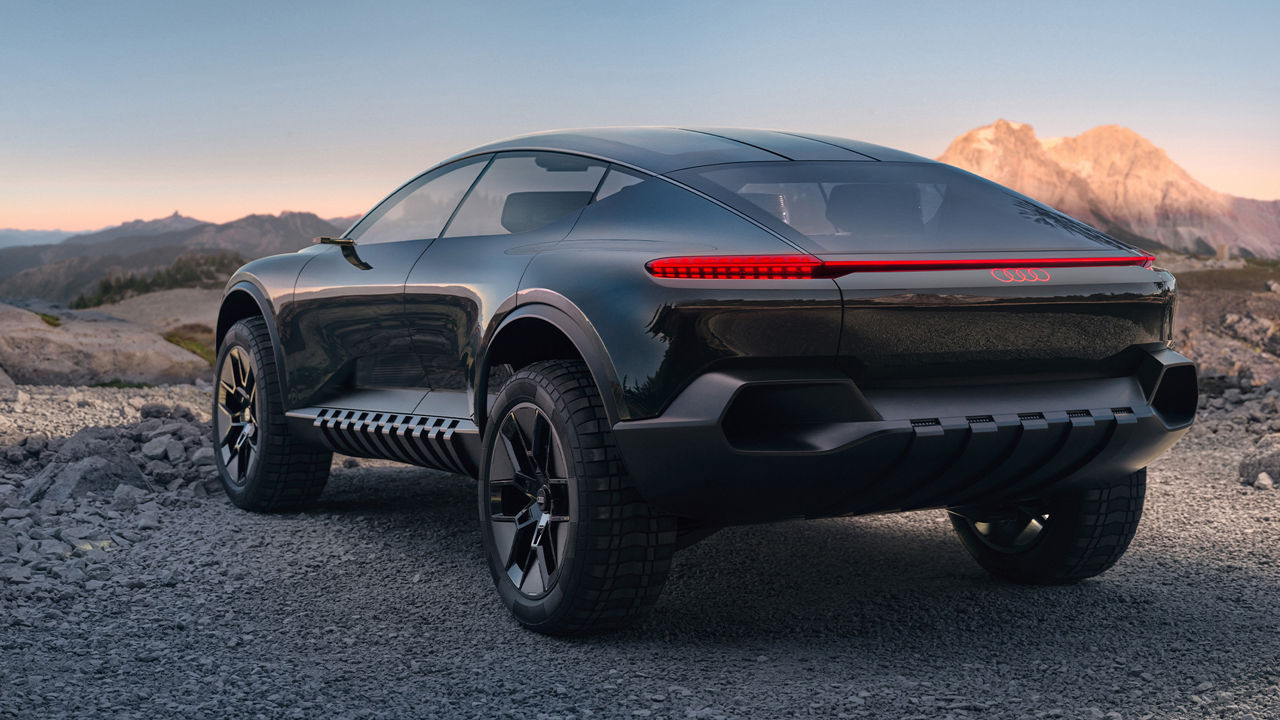What challenges did you face in designing this concept car virtually?
Overall, it was pretty smooth. We only had a few minor issues. For example, we wanted an edge on the rear bumper of the Audi skysphere¹ to be quite visible. It appeared fine in VR but ended up a little washed out when the part was produced. This can happen, but it’s not a big issue. Again, we are still learning from this type of experience. Every time we create a new set of data, we can learn from those little mistakes and adjust our process accordingly.
Is designing a vehicle exclusively in digital only suitable for concept cars or also for production vehicles?
The digital process works for both. We spend more time on clay for production cars, because their development involves complex feasibility and mass production parameters that will inevitably affect the design surfaces. It is better to evaluate this part of the process on a model because the changes are subtle and numerous. But the digital process is pretty much the same, as are the advantages: a gain in time and money.
I remember that, in my earlier days as a designer, we had literally months of sketching before getting the chance to be selected to work on a full-scale model. Now it’s completely different. There are only a couple of weeks of sketching before a selection is made as to which design themes will be developed in computer-aided design (CAD). In turn, that step only takes a couple of weeks and by then you can already compare the different designs in VR 3D or have them milled full-scale in clay if needed. That’s the power of the digital process.
Does virtual design have advantages or disadvantages when you’re thinking about human-centric design?
A digital design process actually promotes human-centric design because, in a digital world, you can literally project what the experience will be like very early on. For example, you can place the car in its natural habitat, put materials onto the exterior and interior surfaces and project the digital interface onto the screens. This is easy and quite quick to do in the tube and, once it’s ready, you can experience the whole thing exactly as the end user - the customer - will.
When I was a younger designer at Volkswagen, we used to wrap full-scale interior clay models with real materials. Even the wood was painted by an artist who used to restore churches in Italy. It was a big job. Nowadays, designers will not present their design without materials, details, environments and lighting that create realistic reflections, etc. It’s unbelievable what they can achieve in a short time. This process was especially useful when developing the Audi skysphere¹, where it’s all about differentiating between two distinct experiences in one car. Working digitally helped us a lot in that instance.

